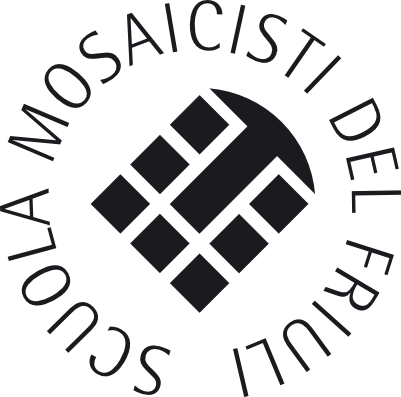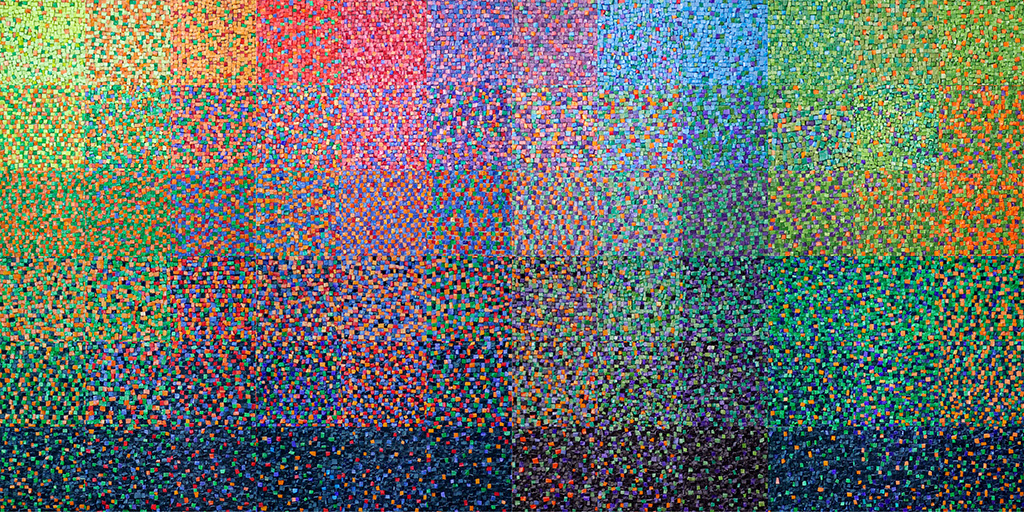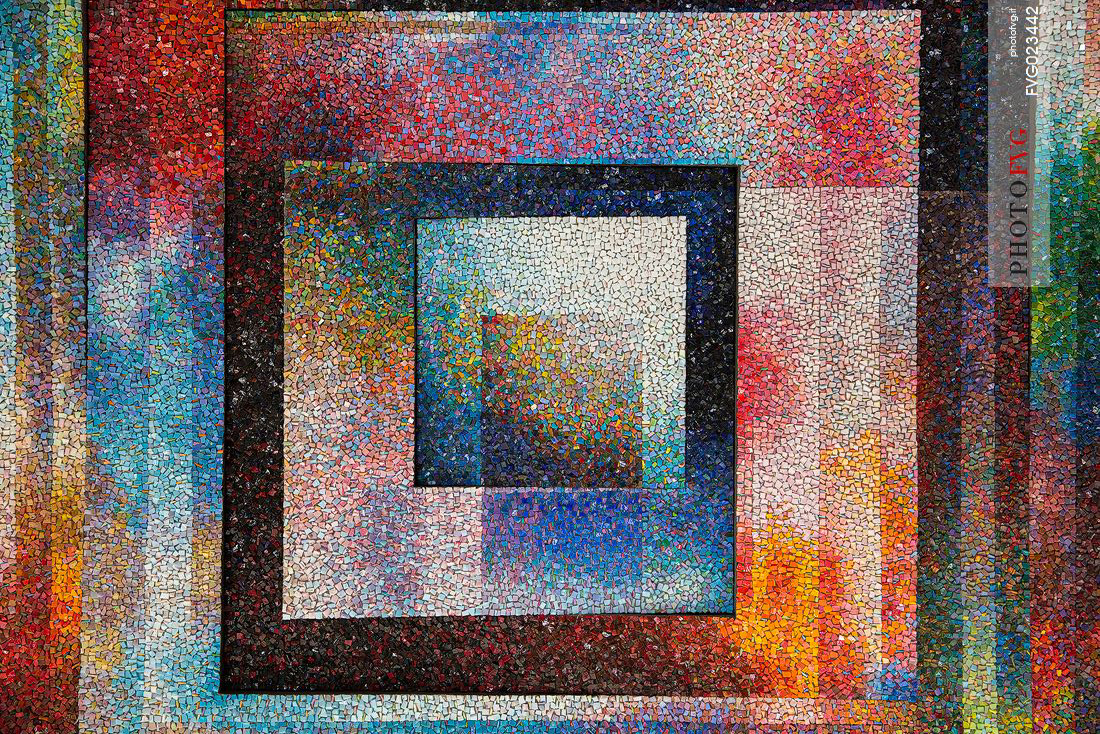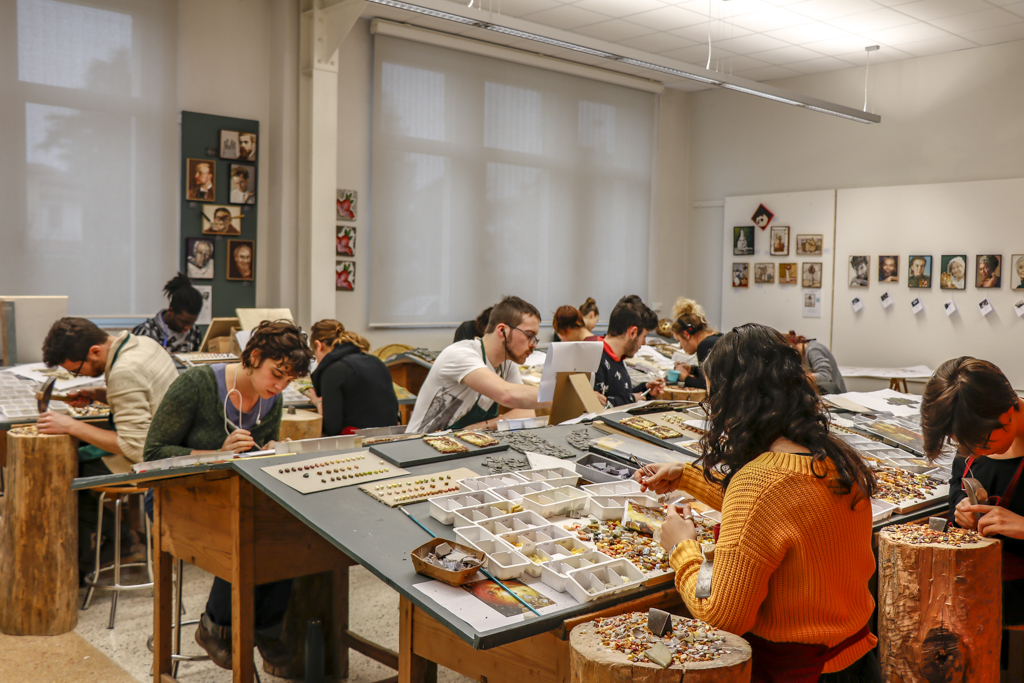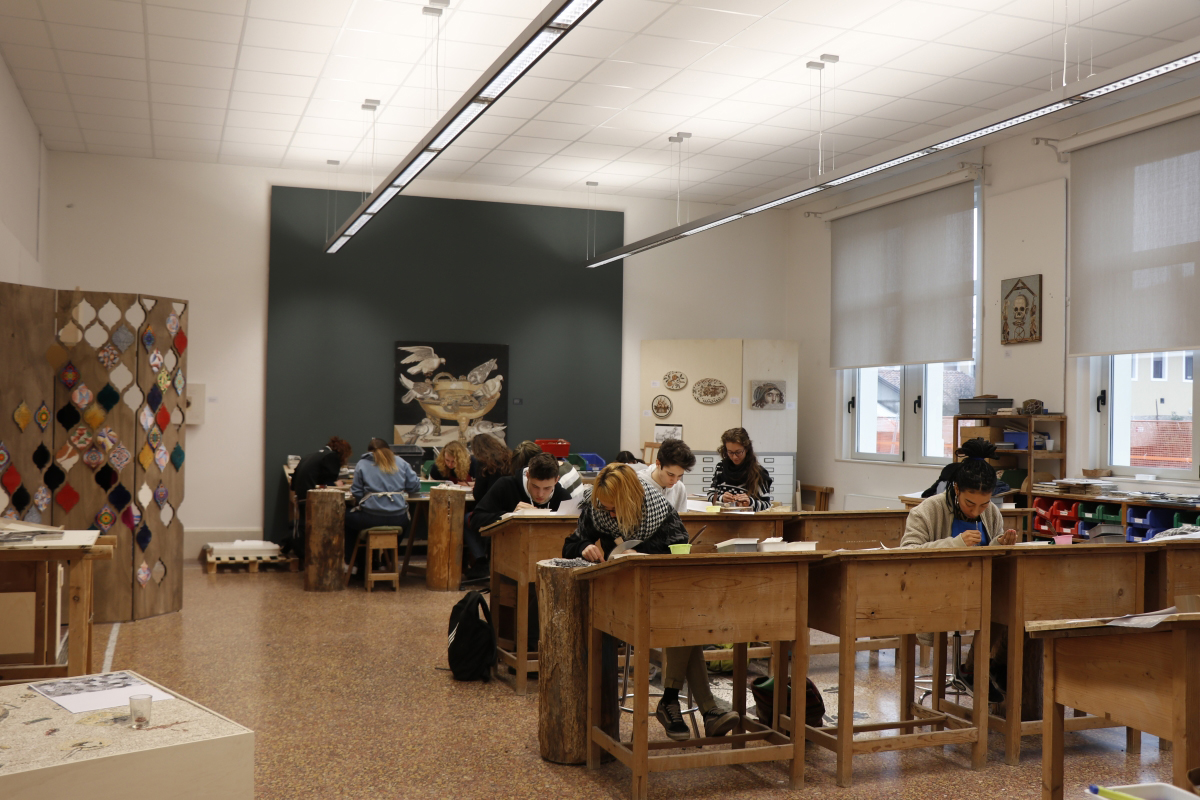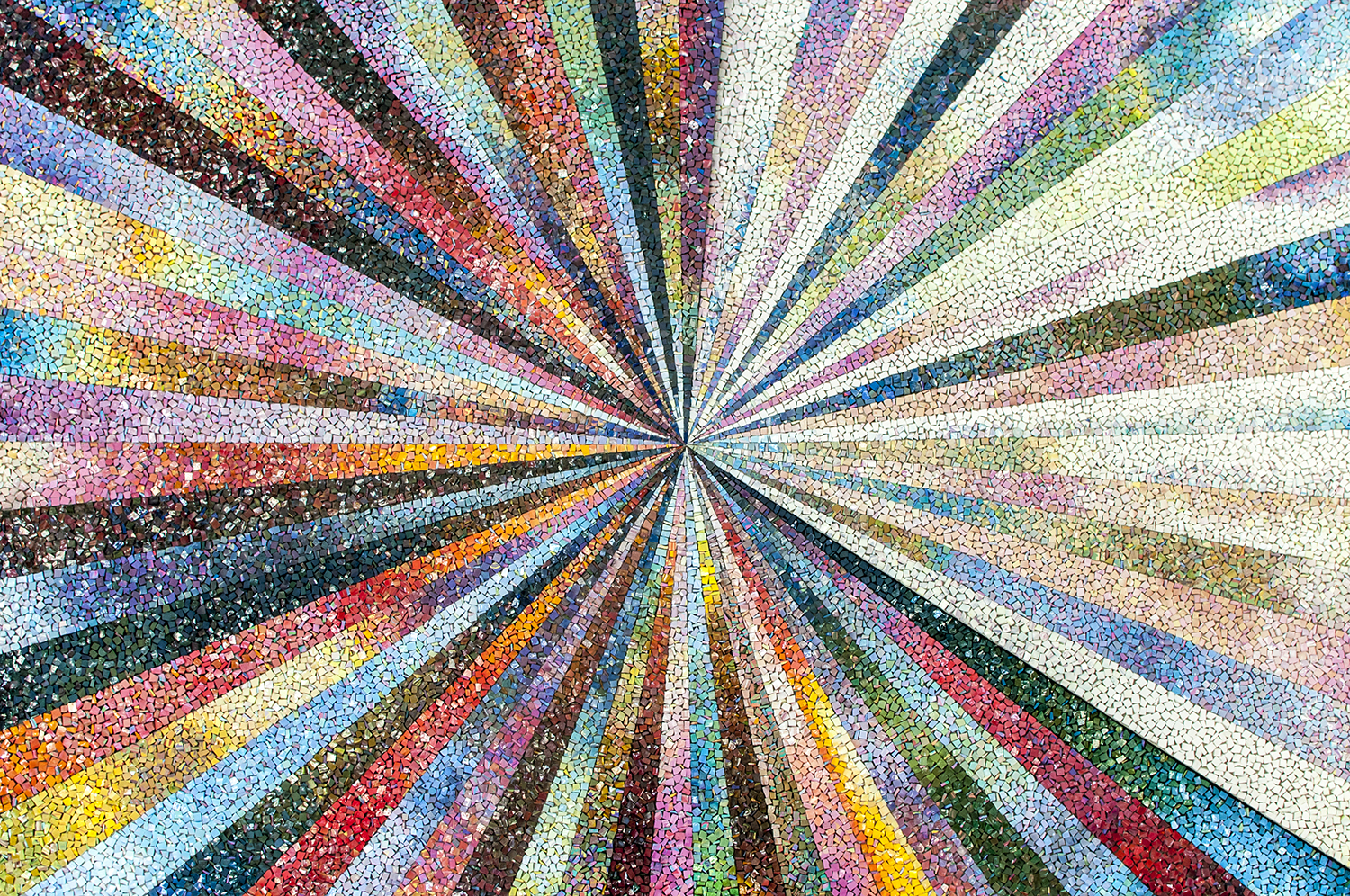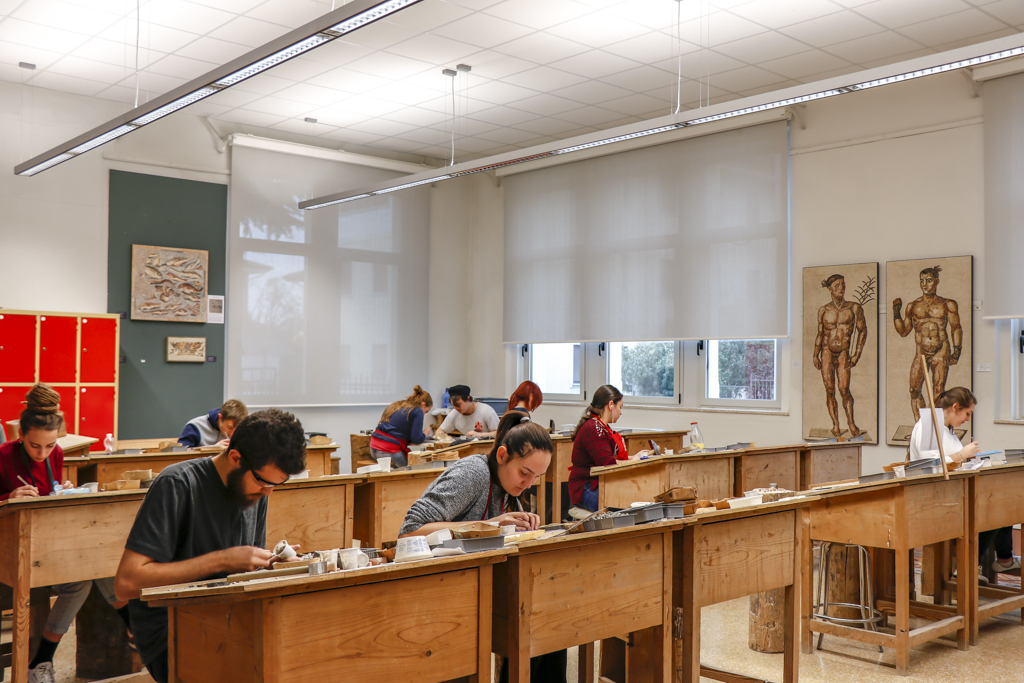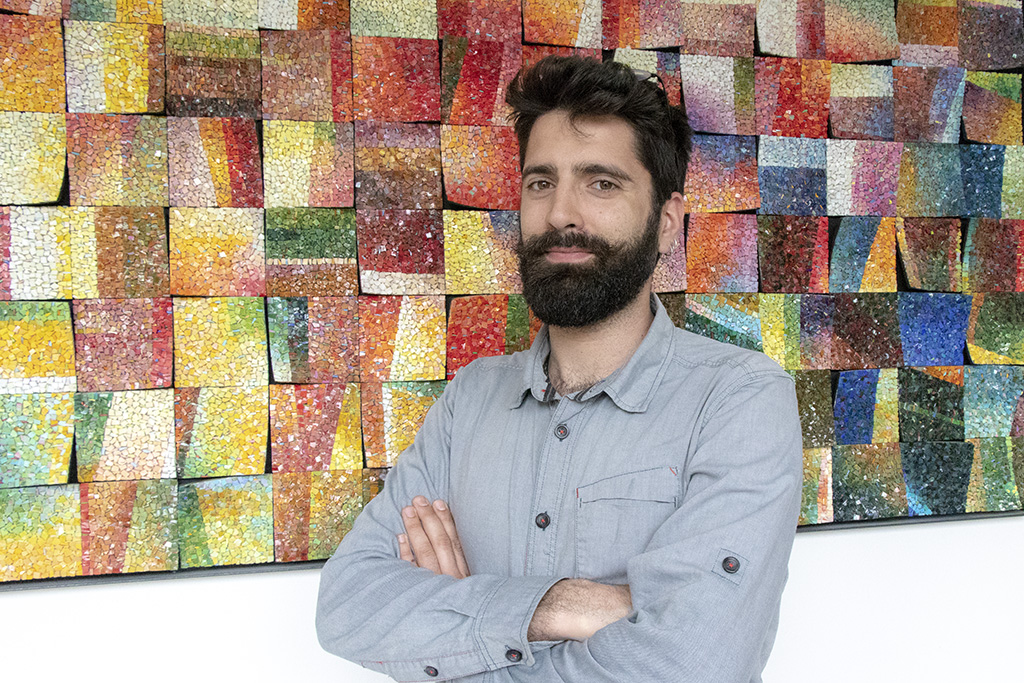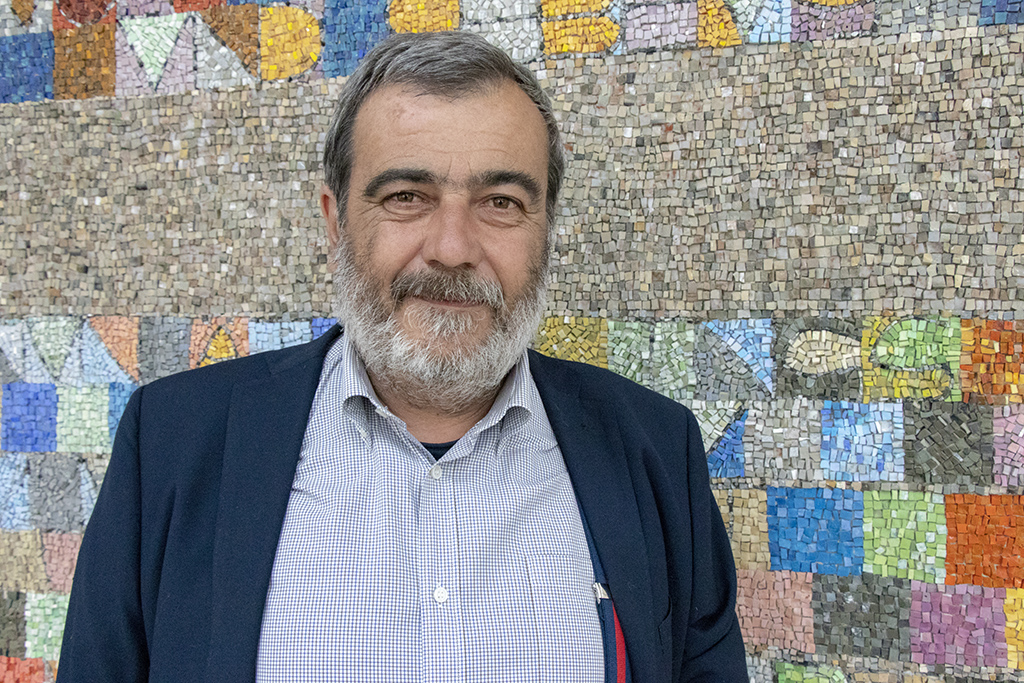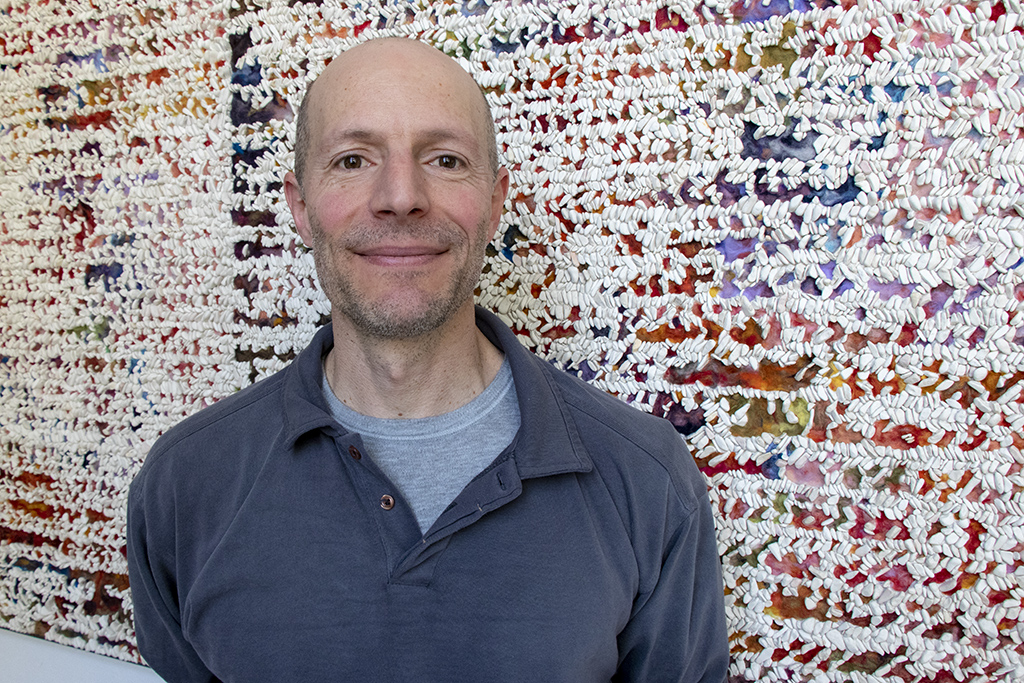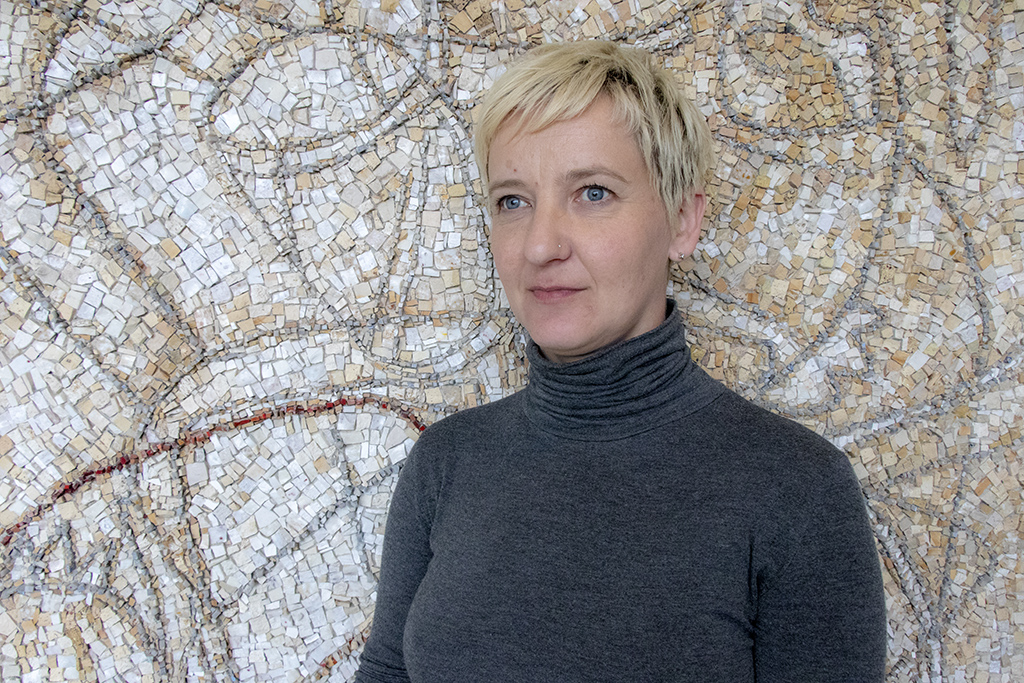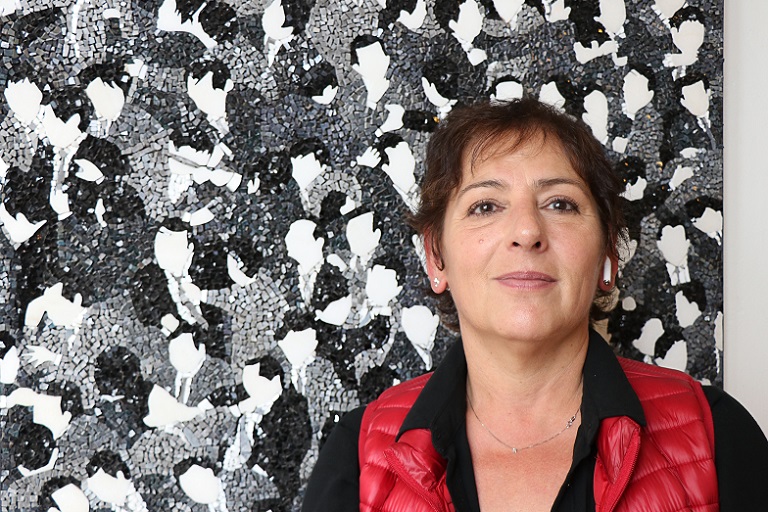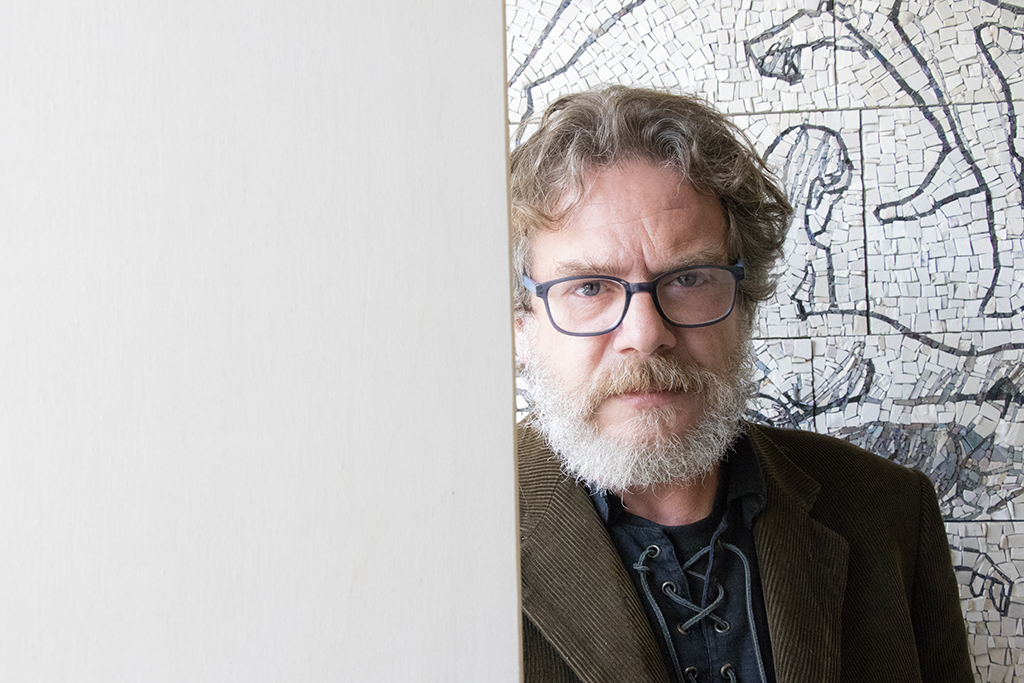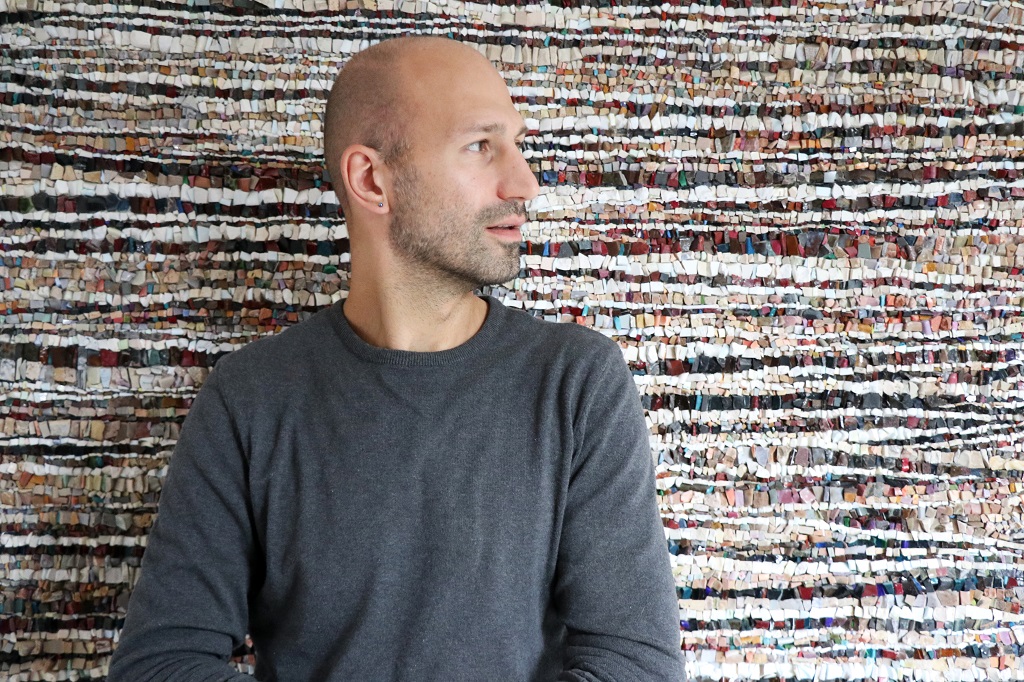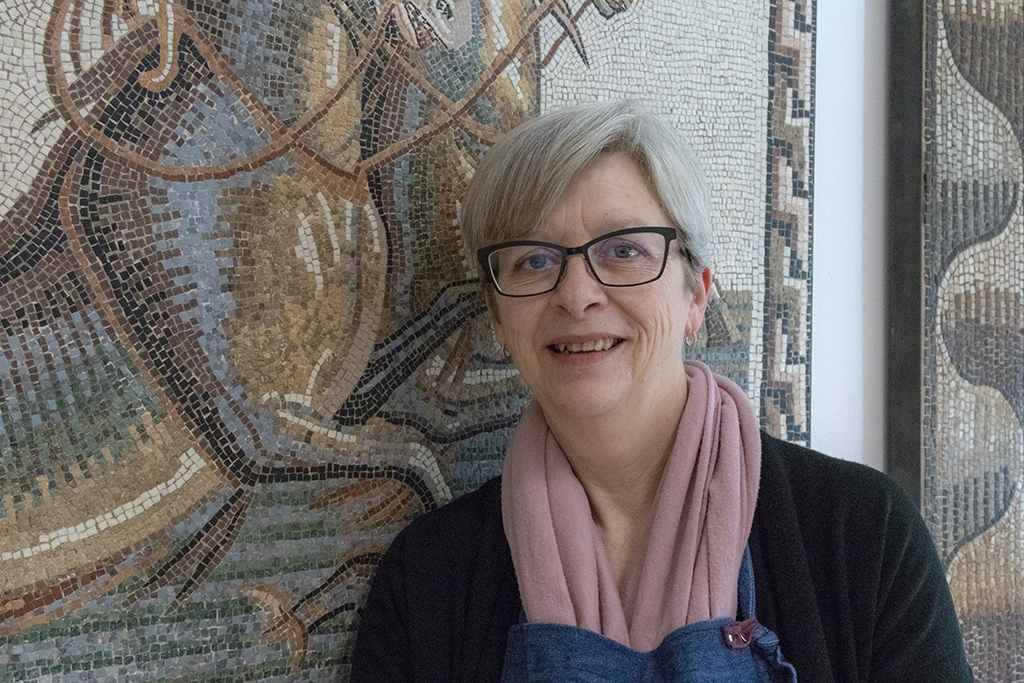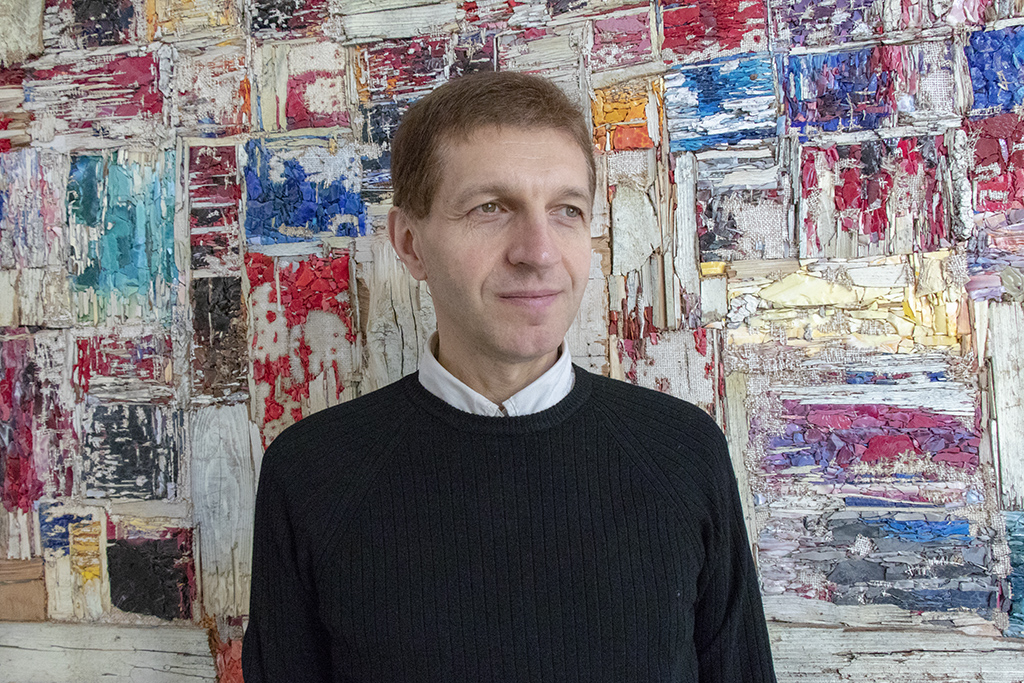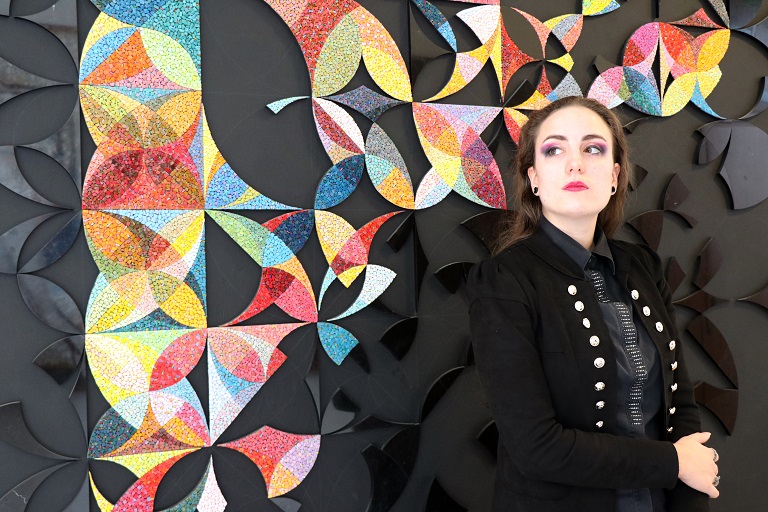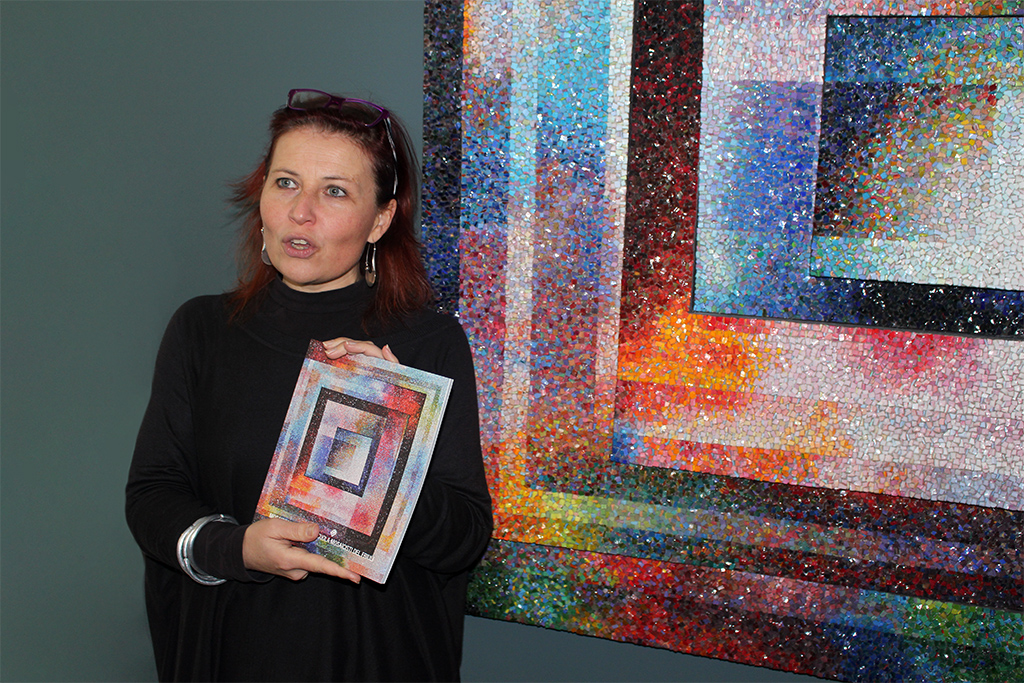Three-year professional course
Maximum number of participants:
40 per year
Min / max age:
From 18 to 40 years old
Knowing the mosaic means acquiring knowledge of the formulas of composing, becoming familiar with the materials and traveling between different artistic contexts, in a continuous dialogue between past and present. The three-year training course aims to accompany the student through the acquisition of high-level technical skills stimulating creativity, towards innovative solutions able to combine a millenary art with contemporary artistic and technological research. Courses have the objective to involve the student in a journey in which “know-how” is combined with a broader scientific and cultural education. The teaching organization offers an opportunity for professional training able to focus on the concrete aspect of the fundamental disciplines , such as the mosaic and the terrace, stimulating awareness of the artistic and cultural context and an in-depth knowledge of the materials and techniques used. In the workshops you learn to do and think, stimulating creativity. The goal of developing critical skills runs parallel to updating and continuous attention to contemporary creative languages. The educational offer also includes seminar educational experiences, meetings with experts, designers and artists, as well as the possibility of attending a specialization course at the end of three years. The figure of the qualified mosaicist arrives so, at the end of the three years, he possesses a wealth of theoretical and practical knowledge that favors him in both individual and group work projects.
In the pluralism of their languages the materials of Mosaico and Terrazzo are treated from the origins to current affairs. In support of wide-ranging training, and functional to the main disciplines, various subjects are promoted. At the hours dedicated to the mosaic and terrace laboratories, the core of the teaching activity, there are lessons in Drawing and Color Theory, Computer Graphics, Materials Technology, History of Mosaic and Geometric Design, in order to make autonomous choices and proposals the mosaicist thanks to a wide and organic preparation able to stimulate it towards the comparison with the different contemporary solutions in the context of a constant research aimed at innovation.
| SUBJECT-MATTER | 1^ YEAR | 2^ YEAR | 3^ YEAR |
| Mosaico | 18 hours | 16 hours | 21 hours |
| Terrace | 4 hours | 7 hours | 7 hours |
| Applied geometry | 4 hours | 4 hours | _ |
| Digital modeling | _ | _ | 4 hours |
| Design / theory of color | 7 hours | 5 hours | _ |
| History of the mosaic | 2 hours | 2 hours | 2 hours |
| Basic computer science | 2 hours | _ | _ |
| Computer graphics | _ | 3 hours | 4 hours |
| Materials technology | 1 hour | 1 hour | _ |
| Tot. WEEKLY HOURS | 38 hours | 38 hours | 38 hours |
Terrance
The course is developed in the three school years with a grow up of information and degrees of difficulty. a large program for learning applications and mosaic poses is carried out, as well as the construction and construction of three-dimensional plaster models and casts, as well as the realization of floor modules and real floors. Naturally the goal is reached gradually. First of all, information on building materials (cements, kicks, resinous adhesives, gypsum …) and on the equipment to be used (trowels, stucco irons, frettazzo, level …) are provided. then we move on to the realization of small caldane and three-dimensional armed structures, shapes and molds containing the modules. Subsequently, preparatory exercises are developed for the sowing technique up to the laying of mosaics and floors, even on large surfaces. We make traditional and innovative floors, from Venetian floors to those in grit and mosaic, combined with each other. In recent years the introduction of new and technologically advanced materials has given the material a different face, aimed at continuous experimentation. It should not be forgotten that the mosaic was born as a stone carpet in antiquity, it became a precious sown and terrace from the 16th to the 17th century, to rediscover itself a new, modular, eclectic and modern surface. this aspect is not secondary to the school mosaicists of Friuli that was born in a context, that of the foothills of Friuli, qualified by the experiences and achievements of local terraces that, first in Venice then in Europe and overseas, have been able to beautify living spaces daily, both public and private, with floors of their elaboration
Mosaic
First Course
During the first year the students are transmitted the knowledge, the technique and the originality of the mosaic art of the origins. The history and culture of antiquity are assimilated by copying and studying the mosaics of the Greco-Roman world that reveal the wisdom, imagination and design of their creators. Suggestive and timeless references are the Greek mosaics of Pella, Delo, Olinto, just to cite a few examples, and the Roman ones of Italic origin or of the provinces of the Empire in present-day France, Spain, Africa, Turkey, Syria …
Second Course
The historical-artistic significance of the medieval and modern mosaic finds in the activity of the mosaic laboratory of the second year fertile soil and new lifeblood. teaching during the second year focuses on different techniques. Initially the Byzantine mosaic technique is tackled by copying or interpreting medieval figurative and ornamental subjects with enamels and golds, overcoming ancient naturalism with backgrounds and accents of golden brilliance. References to Constantinople, Chio, Venice or Monreale are exemplary.The study of the reverse technique on paper is also studied in depth, spread in the second half of the nineteenth century by Gian Domenico Facchina, of Sequals, a village not far from Spilimbergo. In this context, Mannerist, virtuosic, modernist and academic subjects are interpreted in mosaic form.The contemporary technique is also introduced, often interpreting figurative subjects of the twentieth century: portraits and compositions with rough surfaces, animated by tesserae and split multidimensional
Third Course
The contemporary mosaics created in the third year can express new and unusual ideas or interpret contemporary art. The contemporary mosaic meditates on the compositional and chromatic structures that concentrate all the potentials of mosaic art in the expression of an autonomous language, made up of tesserae and fugues, rhythms and alternations. The mosaic language is also experimented focusing on the enhancement of matter, spatiality, light, color and movement. The cut of the card is freer, so the size and thickness change playing with effects of protrusion and retreat, with thickening and overlapping able to create new textures with special effects and formal suggestions. Even the practical applications of scientific theories on perception and vision find space in the identification of a method of work, research and experimentation. During the activity of the third year students have the opportunity to live important moments of in-depth study and contact with current art thanks to the internships carried out with contemporary artists and designers.
Design and Color theory
The design program provides, in addition to the copy from life, the study and reflection on the elements that make up an image (point, line, surface, color, light …). Through the drawing, the knowledge of the mechanisms of visual perception and of the laws of configuration is deepened. The color is evaluated both in its contextual and extra-contextual appearance.
Digital Modeling
The program includes the study of plane geometry and solid geometry by analyzing fundamental geometric shapes and their properties. The descriptive geometry allows to represent the relationship between geometric shapes and space through orthogonal, axonometric and perspective projective systems. Two paths are thus possible: from reality to the graphic or computer model (survey path) and from the model to reality (project path). The teaching provides the student with tools for the analysis and design of decorative modules and for the covering of the plane and surfaces with geometric figures. The program is carried out both with the traditional materials and tools of the design and by means of computer tools for two-dimensional drawing and three-dimensional modeling.
Computer graphics
The aim of the course is to ensure that the student learns the use of computer tools and knows how to manage them, knows the graphic software (Adobe Photoshop, Adobe Illustrator) in order to prepare sketches and mosaic projects, simulate the contextualization of the same according to the study, the presentation to the client and the preparation of auxiliary works for the installation.
History of the Mosaic
From the historical, artistic and technical point of view, the history of the mosaic consists of four main strands divided into the three-year study program: the ancient Greco-Roman mosaic is tackled in the first year up to the study of the early Christian mosaics; the Byzantine / medieval mosaic – followed by the modern mosaic – is studied in the second year, the contemporary mosaic together with the major art movements of the 20th and 21st centuries, are managed in the third year. Among the objectives we pursue the contextualization from the temporal and artistic point of view of the mosaic subjects that the students study in the hours of the mosaic laboratory.
Technology
The natural and artificial materials that make up the tesserae of a mosaic have peculiar characteristics of hardness and resistance, color and atmospheric yield: their specific qualities are dealt with by the technology course. Topics include air and hydraulic binders, mortars, concrete, rocks, bricks, refractory materials, ceramic materials, glass, wood, paper, synthetic resins.
For further information on enrollment in the professional course: telephone 0427.2077 email info@scuolamosaicistifriuli.it pec scuolamosaicistifriuli@legalmail.it – secretarial hours from Monday to Friday from 08.00 to 12.00 and from 13.00 to 16.00
Masters of the school mosaicists of Friuli
More Info
Times and frequency
- The formative year begins in late September and ends in June, the exact dates will be communicated to the students with due advance.
- There are 38 hours of lessons per week at compulsory intervals (for the promotion and/or admission to final exams, the minimum frequency of 80% of the hours of lessons actually performed) is required.
- Monday to Friday 08.00 – 12.00 and 13.00 – 16.00 with three afternoons per week to 17.00.
Accommodation seeks-Offers
Here you can find the forms to offer or search accommodation and consult the offers already present.
Professional outlets
The skilled mosaicists have the possibility to carry out professional activities in different working areas, taking the path of the free profession or entering to be part of laboratories or company realities already established. The development of technical and artisan skills highly qualified in synergy with activities and laboratories aimed at stimulating creativity and personal interpretation offer the opportunity to enter the world of artistic and architectural creation. To work in the field of urban furnishing or interior design and decoration in autonomous form or through collaboration with designers and designers.
Foreign students
In order to be admitted to school attendance, foreign students must possess a good knowledge of the Italian language to be in possession of the requirements placed at art. 1 of the registration rules A.F.2022/2023; Submitting the application in accordance with the provisions of art. 2 registration rules A.F. 2022/2023; The documentation accompanying the application for registration to the school must be translated into the Italian language by a duly recognized translator. Be in compliance with the residence permit or the study visa (of which they must submit a copy to the school secretariat as soon as they are in possession and in any case no later than 30 days after the initiation of the courses), health care.
Handicapped students
The handicapped can be admitted to the frequency of the school after the ascertainment of a training course, supported by appropriate documentation, established in agreement with the sector welfare agencies, in number of one unit per course. (art. 8 Registration rules A.F. 2022/2023).
Guidance
The school mosaicists of Friuli organizes on request, in or out of office, meetings aimed at the presentation of its training offer to teachers and high school students. It offers the possibility to organized groups or individuals interested to visit the school spaces, the classrooms and the laboratories used for the didactic activity. Visiting the spaces dedicated to the daily school activities offers the opportunity to deepen and better understand the possibilities offered by the school to the students thanks to the elaboration and realization of projects. By guaranteeing a minimum number of accessions it will be possible to organize short introductory courses to mosaic techniques.


